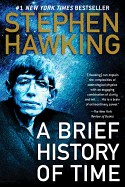A Brief History of Time, Updated and Expanded Tenth Anniversary Edition, by Stephen Hawking - ISBN 9780553380163 - Bantam Books 1998
Motivation
Growing interest in cosmology, more confidence and work related to physics (thanks to bridges like Programming The Universe) and loaned by Sylvain
Pre-reading model
Draw a schema (using PmGraphViz or another solution) of the situation of the area in the studied domain before having read the book.
Reading
- reference to the evolutionary process during chapter 4 Our Picture of the Universe
- "if there really us a complete unified theory, it would also presumably determine our search for it! And why should it determine that we come to the right conclusions from the evidence? Might it not equally well determine that we draw the wrong conclusion? Or no conclusion at all?" (p13)
- "The only answer I can give to this problem is based on Darwin's principle of natural selection. The idea is that in any population of self-reproducing organisms, there will be variations in the genetic material and upbringing that different individuals have. These differences will mean that some individual are better able than others to draw right conclusion about the world around them and to act accordingly. These individual will be more likely to survive and reproduce and so their pattern of behavior and thought will come to dominate. It has certainly been true in the past that what we all intelligence and scientific discovery have conveyed a survival advantage." (p13)
- "a machine that was powerful enough to accelerate particles to the grand unification energy would have to be as big as the Solar System - and would be unlikely to be funded in the present economic climate. Thus it is impossible to test grand unified theories directly in the laboratory. However, just as in the case of the electromagnetic and weak unified theory, there are low-energy consequences of the theory that can be tested." (p76-77)
- brief explanation of the Anthropic Principle
 (p128)
(p128)
- anthropic-principle.com by Nick Bostrom, author of the Anthropic Bias: Observation Selection Effects in Science and Philosophy, Routledge 2002
- Chapter 11 discusses about model encapsulation (p171)
- introduction to string theory (p174)
- brief history of cosmology (p187)
See also
Overall remarks and questions
- find link about my previous interest about black holes and computations
- can information be destroyed, if not, can we some get out of a black hole? be deducted? can we use a black hole to compute?
Synthesis
So in the end, it was about X and was based on Y.
Critics
Point A, B and C are debatable because of e, f and j.
Vocabulary
(:new_vocabulary_start:)
coalesce
crockery
(:new_vocabulary_end:)
Post-reading model
Draw a schema (using PmGraphViz or another solution) of the situation of the area in the studied domain after having read the book. Link it to the pre-reading model and align the two to help easy comparison.
Categories
Back to the Menu
 Fabien Benetou's PIM
Fabien Benetou's PIM






